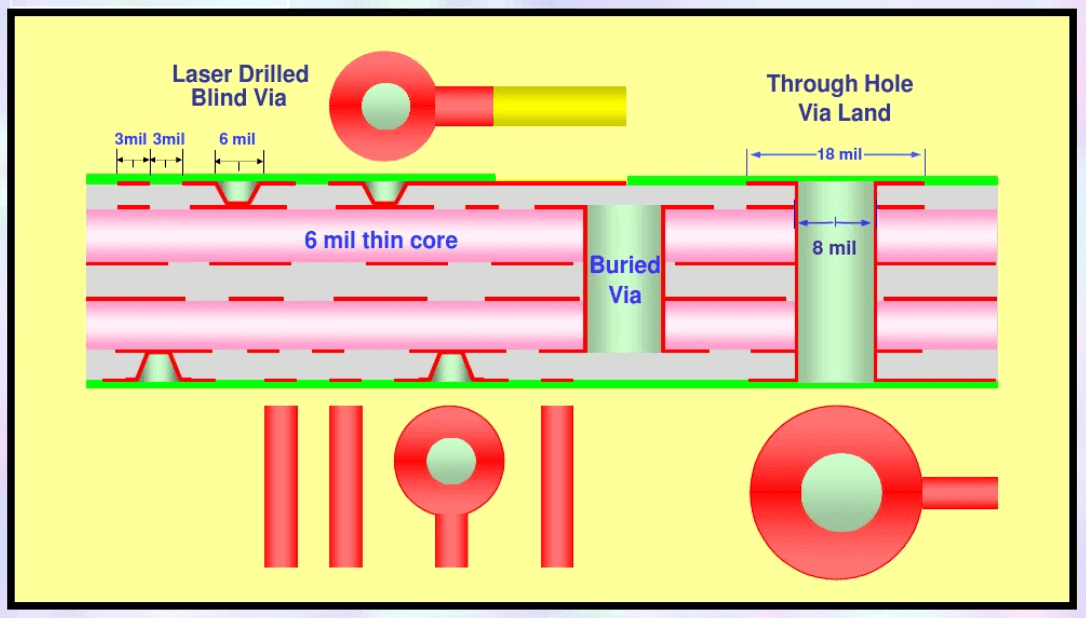To ensure the quality of HDI printed circuit boards, manufacturers carry out a variety of inspection methods during the production process, and each inspection method will reveal different HDI circuit board defects.

1. HDI circuit board size and appearance inspection
The content of HDI circuit board size inspection mainly includes the directness of processing holes, spacing and tolerances, and the edge size of HDI circuit boards. The content of appearance defect inspection mainly includes: the alignment of the solder mask and the pad; whether the solder mask has abnormal conditions such as impurities, peeling, wrinkles, etc.; whether the reference mark is qualified; whether the circuit conductor width (line width) and spacing are in line Requirements; Whether the multilayer board is peeled off, etc. In practical applications, special equipment for HDI circuit board appearance testing is often used to detect it. Typical equipment is mainly composed of computers, automatic workbenches, and image processing systems. This system can detect the inner and outer layers of the multilayer board, single/dual panels, and base map films; it can detect broken lines, overlapping lines, scratches, pinholes, line widths, rough edges, and large Area defects, etc.
2. HDI circuit board solder mask integrity test
HDI circuit boards generally use dry film solder mask and optical imaging solder mask. These two kinds of solder mask have high resolution and immobility. Dry film solder mask is laminated on the PCB under the action of pressure and heat. It requires a clean HDI circuit board surface and an effective lamination process. This kind of solder mask tin-lead alloy has poor surface adhesion. Under the impact of thermal stress generated by reflow soldering, the phenomenon of peeling and breaking from the surface of the HDI circuit board often occurs. This kind of solder mask is also relatively brittle, and may cause micro-cracks under the influence of heat and mechanical force during leveling. In addition, physical and chemical damage may also occur under the action of cleaning agents. In order to find out these potential defects of dry film solder mask, strict thermal stress tests should be performed on HDI circuit boards during incoming material inspection. When the solder mask peeling is not observed during the test, the HDI circuit board test piece can be immersed in water after the test, and the capillary action of the water between the solder mask and the PCB surface is used to observe the solder mask peeling. It is also possible to immerse the HDI circuit board specimen in the SMA cleaning agent after the test to observe whether it has physical and chemical effects with the solvent.







